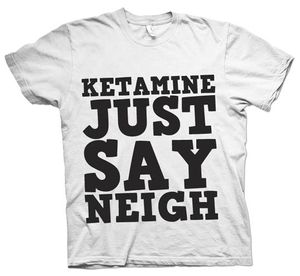Depression and a Rave Drug: A Tale of Lost Brain Connections
We’ve all felt down on our luck sometimes. Maybe we didn’t do as well on a test as we would have liked, or we argued with one of our close friends, or we didn’t get that job we wanted. Maybe all we wanted to do at that moment was climb into bed and wish the world wasn’t there.
Yet those moments are fleeting sadness, a minor blip in the grand scheme of things. There’s no major brain chemistry changes occurring, unlike in medical depression (major depressive disorder). Despite years of study and investigation, the underlying cause of MDD is still puzzling to many researchers. Nearly all antidepressive medication is based on research done dozens of years ago. Furthermore, most of those drugs take weeks to months to take effect, if they ever take effect at all, making depression one of the most disabling conditions in modern society.
However, recent studies have shed some new light on the biological aspects of depression and chronic stress. For reasons still unknown, MDD is rooted in an overall reduction in brain connectivity, as well as atrophy of some key regions. Essentially, the brain becomes smaller, with fewer synapses and neurons. Somehow, the homeostatic balance that maintains synaptic plasticity becomes disrupted, leading to a loss of brain function and depression.
Nevertheless, there is hope on the horizon for those whose depression remains untreated. Studies have shown that ketamine, a sedative and general anesthetic drug, has a startlingly rapid effect on alleviating depression. Typically used to induce anesthesia, ketamine is a powerful drug that acts as an NMDA receptor antagonist by binding noncompetitively to the receptor and preventing the use of the channel. Note that ketamine is also commonly used as a rave drug, as it causes some hallucinogenic effects. It has also been used as a date rape drug through its more conventional anesthetic properties.
All this is nice, but how does ketamine actually affect depression?
The answer is complicated, but we can say that ketamine somehow sparks a massive burst of synaptogenesis, or a creation of new synapses, especially in the prefrontal cortex (PFC). This finding is a completely novel approach to depression, focusing on the number of synaptic connections rather than the activity of the synapses that are already there. The exact mechanism is unknown, but the prevailing hypothesis, brought forward by researcher Ronald Duman, states that ketamine sparks this explosion of synaptogenesis by increasing glutamate transmission in the PFC, likely by inhibiting GABAergic inhibitory interneurons. This release of extra glutamate is thought to cause a cascade of protein synthesis reactions that result in an increase the amount and strength of synapses throughout the brain, but especially in the cortical and limbic structures. Moreover, this protein synthesis occurs within hours of ketamine intake, leading to a much faster treatment of depressive symptoms.
In addition, ketamine increases the activity of cytoskeletal proteins responsible for the expansion and stabilization of dendritic spines while also decreasing the activity enzymes associated with the breakdown of dendritic spines. Both of these occur through that same NMDA-blocking pathway that causes an increase in glutamate release in the brain.
Despite its unconventional past as an anesthetic and rave drug, ketamine is proving its potential to be an instrumental part of depression treatment as we move forward. Its effects on synaptogenesis are profound, leading to a single dose of ketamine alleviating depression within hours. The effects can last for several weeks.
There is only one problem. Despite ketamine’s promise as the first revolutionary drug in the field of depression medication since the 1970s, it carries with it some severe side effects, including hallucinations, nausea, persistent dizziness, and headache. Long term side effects can be even worse, especially when the brain is overexposed to ketamine.
That is not to say that the potential of ketamine is being ignored. In fact, many companies are charging into the field, trying to find compounds that can mimic the effects of ketamine while minimizing the side effects. Hope is on the horizon for those with untreatable depression. And maybe, just maybe, a drug with a spotted past will be the one to do it.
Synaptic Dysfunction in Depression: Potential Therapeutic Targets – Science
Ketamine Relieves Depression by Restoring Brain Connections – NPR

November 19, 2012
Shouldn’t this be tested more before we come to any conclusions?